This is a Nikon N80 35mm SLR camera released by Nikon on January 27, 2000. The N80 is known as the F80 outside of North America, but otherwise the two cameras are identical. There was also a version with a built in data-back known as the N80QD. The N80 was the last generation of consumer film SLRs released by Nikon before the switch to digital. The body of the N80 is almost identical to Nikon’s first digital SLRs and employs many of the same design elements that the company still uses today. The ergonomics are nearly perfect, it has a full LED display inside of the viewfinder, and an LCD screen with all of the information you’d need to know on top of the camera. Like all modern consumer Nikon SLRs, it has a popup flash, fully Automatic, Program, Aperture Priority, and Shutter Priority modes. It supports all Nikon Ai lenses all the way through modern AF-S lenses. If you are looking for the experience of a completely modern SLR that still shoots film, this could be the perfect camera for you.
Film Type: 135 (35mm)
Lens Mount: Nikon F-Mount Bayonet Mount
Lenses: Nikkor 50mm f/1.8 + many others
Focus: Fixed SLR Prism
Shutter: Focal Plane Vertical Metal Blade
Speeds: B, 30 – 1/4000 seconds, stepless
Exposure Meter: 3D Matrix, Center-Weighted and Spot metered
Battery: 2 x 3V CR123A Silver-Oxide or Lithium equivalent, also compatible with MB-16 Battery Pack
Flash Mount: Hotshoe
Manual: http://www.cameramanuals.org/nikon_pdf/nikon_n80_n80qd.pdf
History
In the year 2000, digital cameras had already been on the market for about a decade. Many early digital cameras were very low quality and considered by many pro and advanced amateur photographers to be nothing more than a toy. These early digital cameras had sensors no larger than 1-2 megapixel, and the quality of the images they could make were quite poor.
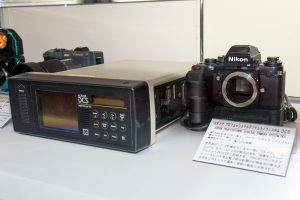
Interestingly, the most successful company in the digital world in the late 1990s was Kodak. Kodak was at the time the world’s largest producer of film by a large margin. It is estimated that at one point, Kodak produced over 75% of the world’s entire supply of film, yet they were pioneers in digital photography, an industry that would eventually strangle the company. Kodak’s first commercially available DSLR was the DCS 100 from 1991, a mashup between a Nikon F3 body with a digital sensor in place of the film back and several other enhancements.
Throughout the 1990s, Kodak would continue to release “modified” versions of Nikon and Canon cameras as part of their DCS series. All DCS cameras were very large and heavy cameras that were aimed at professional photojournalists who valued quick turnaround time instead of having to wait for film to be developed. Although these models saw limited success, they barely made a dent in the sale of professional and consumer level film cameras.
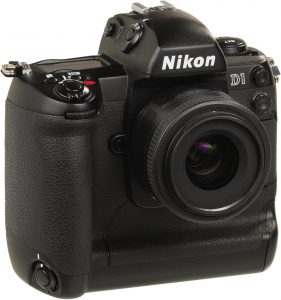
By the end of the decade, companies like Nikon saw an opportunity to capitalize on digital technology and began testing the waters by releasing their own models. Nikon’s first in-house designed DSLR was the D1 from 1999, a full year before the N80 would be released. I can’t speak for the sales of the D1, but it couldn’t have sold well. The price tag of nearly $5000 kept it out of reach of all but the most professional photographers, plus the quality of it’s images were drastically inferior to those of capable 35mm cameras of the day.
Still, the benefits of digital photography were already evident and the need to continue to develop the technology was something that no one could deny. Of course no one was ready to give up on film yet, so companies like Nikon still had a responsibility to release new models and come up with innovative new features to get people to continue to want to buy new models. Enter, the Nikon N80.
The design of the Nikon N80 was an evolution from the design of the F3 from 1980. It featured a prominent hand grip on the photographer’s right side, and a red accent on the body. Some of the design elements from the F3 could be seen in all followup Nikon SLRs through the 80s and 90s, but in my opinion, it wouldn’t be until the F5 from 1996 in which we would see a modern Nikon with truly excellent ergonomics, molded grips, soft touch surfaces, and high quality composite plastic bodies that did not look cheap or tacky.
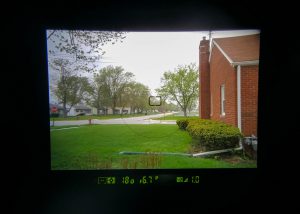
The F100 would be the first advanced amateur camera to feature Nikon’s new modern design. The F100 had a magnesium alloy body that was sealed from weather and dust, it had a top 1/8000 second shutter speed, a faster flash sync speed, and could meter using manual lenses. The N80 of 2000 was a less expensive model that was in the middle of Nikon’s lineup at the time. It was a step up from the entry level N65 which was targeted at first time SLR users. The N80 had all of the shooting modes of the F100, the same depth of field control, LCD backlight, dual command dials, and Nikon’s state of the art 3D matrix metering system.
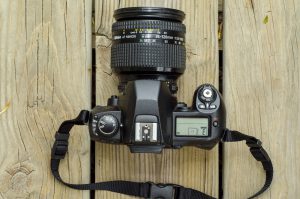
The N80, for all intents and purposes was the best of the mid range film SLRs Nikon had at the time. It sold for around $499 with a 28-80mm kit lens and offered features rarely seen in cameras under the $500 price point. For those who didn’t need a pro level camera, but wanted something that gave them more flexibility than an entry level camera, this was it. It was also popular as a backup option for professional photographers because it accepted the same lenses as the more expensive bodies, was light weight, and not too expensive if something were to happen to it.
As we all know, the digital revolution caught on a lot quicker than many people probably would have expected at the beginning of the 21st century. By 2005, Konica and Minolta had all but given up on photography, companies like Yashica, Miranda, and Kodak were no longer making cameras. The N80 was a rather long lived model, being sold until 2006, but by the time it would have been logical to release a new model, the world had already moved to digital. Although Nikon would continue to offer film products through the end of the 2000s, there was no need to come up with a new model to take the N80’s place in their product lineup. As a result, the N80 could be seen as Nikon’s one and only truly modern SLR that was within the reach of the average person.
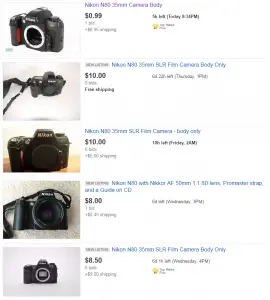
My Thoughts
It is perhaps this legacy that makes the N80 such an intriguing camera today. While the F100 was a bit more advanced, it is also larger, heavier, and more complicated. Film collectors and fans of old cameras like myself generally shy away from modern cameras like the N80, but I believe there is still a need for bodies like this. If you want to experience a pro-level film camera, there are many better options. If you want something all mechanical or completely manual, of course you wouldn’t consider the N80, but I feel there is still a time and place for an easy to use, yet state of the art modern SLR with advanced features. I call these “zoo” cameras. They’re the perfect camera to take along with your family on a trip to the zoo. Part of the appeal of shooting old film cameras is for the experience, but sometimes you need something predictable and reliable, and if you are like me and already have a large collection of Nikon glass, the N80 fits the bill perfectly.
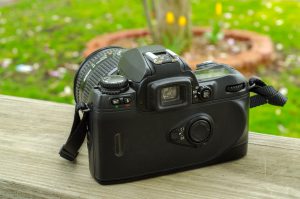
Since I brought up Nikon lenses, I should warn you of one omission in the N80’s feature set, and that is the ability to meter with a manual focus lens. Nikon didn’t see the need to allow for the N80 to use it’s meter in full manual mode. While all old Ai and Ai-S lenses will mount fine to the camera, they cannot use the meter. The camera will return an error in any mode except “M”. If you want to shoot with an old 70s or early 80s pre-AF Nikkor, you have to go it alone. For this reason, you should stick with AF or AF-S lenses, even digital G lenses without aperture control work fine too.
When using manual focus lenses, the ground glass in the viewfinder lacks any of the typical focus aides like a microprism collar or split image rangefinder circle found on most manual focus cameras. To help you, the camera has a built in focus assist light which shows a green circle in the bottom left corner of the viewfinder when it detects the image is properly focused. If you look at the image of me in the mirror below, you can see I am using a manual focus Nikon Series E lens which I was able to sharply nail focus through my bathroom mirror.
I don’t know that anything I say will change the mind of anyone who looks at the N80 as a relic, as it’s too old for a digital photographer to care about, and it’s too new to attract the attention of vintage collectors. Many of the reasons I love film are still true when using this camera. There’s still that film-like look that you can’t get with digital, you have to exercise restraint at composing your images more carefully so as not to waste an exposure, and there’s still the process of loading and unloading film, waiting to develop it, and getting the delayed gratification of seeing your results days or weeks instead of seconds later.
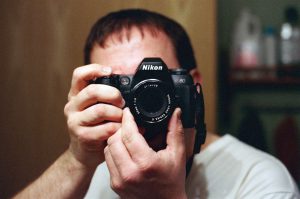
I’ve had my N80 for about 2 years. It was actually one of the very first film cameras I bought. The only reason I picked it up in the first place was because I was scared of shooting film and wanted something safe. I already had some Nikon AF lenses and I knew they’d work on this body. I never considered writing a review for it, because I just didn’t think there was anything worth saying. My hobby shooting film has already gone in directions I never imaged it would go. I have cameras that shoot extinct film like 828, 116, and Univex 200. I have plate cameras that are over 100 years old, large cameras, small cameras, Soviet cameras, Czech cameras, and even some auto focus cameras. Yet, I still enjoy shooting with this N80. I took it with me and my 2 year old to the Chicago Auto Show, and my niece’s first birthday party. For all of the great things I can say about a number of my other cameras, I still get a little bit excited when I pick this camera up.
If you’ve made it this far into this review and still aren’t convinced, pick one up. They’re so cheap. If you can get one with a lens, great, if not find any Nikkor (except non-Ai ones) and give it a shot. I’m not saying it will change your life or redefine your opinion of photography, but I think that collectors focus so much on cameras from the 1970s and earlier, that we forget there was an era past the 1980s and 90s where cameras weren’t butt ugly, where the manufacturers finally figured out how to use plastic that was comfortable, and just a little bit sexy. The N80 in many ways is the perfect film camera. It’s cheap, it has a state of the art auto exposure system, a great auto focus sensor, a great viewfinder with tons of info, and it accepts some of the best lenses ever made.
My Results
I’ve shot several rolls of film through my N80 since getting it in late 2014. I’ll be honest, I can’t tell a difference in image quality between this camera or any other Nikon SLR I own. I could select random photos taken with my Nikkormat FTn, Nikon FM, Nikon FA, and this camera and scatter them in a gallery and you’d never know the difference. I often swap lenses between my cameras and other than focal differences, the results nearly all look the same. This isn’t a complaint, more a statement of the overall quality of everything Nikon has ever made. If you have a reason not to shoot with an N80, it won’t be because of the quality of the photos it makes.
So, as you look through these 8 pictures, know that I could show you a ton more. These are a small sample of what I’ve shot with this camera. For those of you who might read my reviews and think that I constantly walk around with various TLRs, Retinas, and folding cameras loaded with film, I don’t. When I want to shoot a roll of film and don’t want to think too hard, I choose this N80. So there, I have exposed myself. I hope that doesn’t change anyone’s opinion of me! 🙂
This is now my third Nikon review I’ve written for this site, and I own several others that I could write about. The reason it’s taken me so long is because I try not to duplicate a lot of info that’s already out there on the web. There is already a ton of information about various Nikon SLRs, but it seems to be the same models over and over again. People love the F1-6s, the FEs, the FMs, and the Nikkormats. I’ve now written articles for the EM, the FA, and this N80 because I feel like they’re often overlooked models that are great for their own reason. The EM is the smallest and lightest weight Nikon and gets a bad rap from many people due to it’s limited feature set, but is otherwise a great SLR. The FA is the most advanced manual focus Nikon ever made but is often overlooked by the FE2 and F3, and now I preset to you the N80 which I think is the most modern consumer oriented film SLR Nikon has ever made and one of my favorite cameras.
My Final WordHow these ratings work |
The Nikon N80 is a modern camera loaded with advanced features. It looks and feels like a current generation DSLR, yet it still shoots film. It is a crossover camera for people who want to shoot film with the ergonomics and technology of a digital camera. It can mount any Nikon non-Ai lens, and can meter with any AF lens from the 1980s through today. The autofocus and auto exposure system are infallable, the viewfinder gives you more information than you could ever need to know, and it just feels great in your hand. I know this camera will have limited appeal for most people, but for me, I enjoy it ever single time I pick it up. If I had one complaint about it, is that it distracts me from using many of my older cameras because I love it so much! | ||||||
| Images | Handling | Features | Viewfinder | Feel & Beauty | History | Age | |
| 2 | 2 | 2 | 2 | 2 | 0 | 0% | |
| Bonus | +1 for how complete of a camera this is, its one of my favorite and easiest to use cameras in my entire collection | ||||||
| Final Score | 11.0 | ||||||
Additional Resources
As a side note, the Nikon N80 is the first camera I’ve reviewed on this site that came out during the time in which people were writing reviews on the Internet. I found it interesting to read reviews and comments about this model from the perspective of when it was originally released.
https://en.wikipedia.org/wiki/Nikon_F80
http://www.nikonusa.com/en/nikon-products/product-archive/film-cameras/n80.html
http://www.kenrockwell.com/nikon/n80.htm
http://photo.net/photo/nikon/n80
http://mir.com.my/rb/photography/companies/nikon/htmls/models/specroomy2k/f80/index.htm
http://www.steves-digicams.com/2001_reviews/n80.html
http://www.photographyreview.com/cat/cameras/film-cameras/35mm/nikon/n80/prd_84724_3105crx.aspx
https://www.lomography.com/magazine/155676-nikon-f80-an-awesome-camera-with-unlimited-possibilities
https://www.flickr.com/groups/nikonf80/

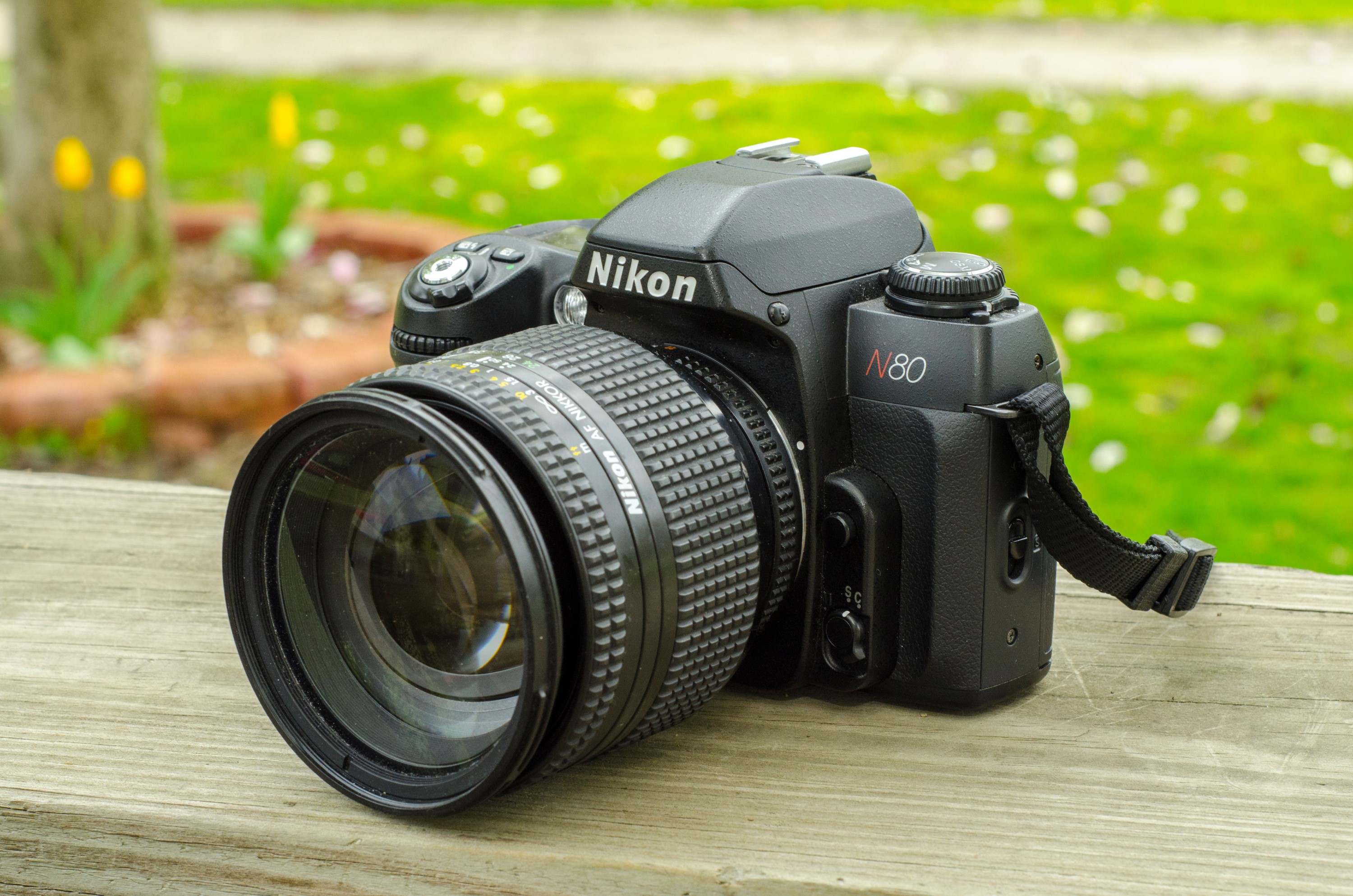
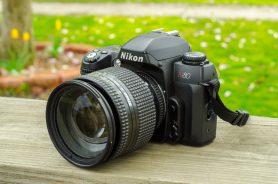
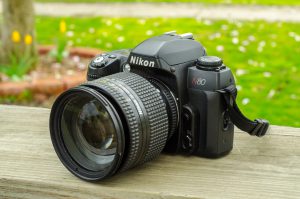








excellent, honest, really interesting personal review. i really enjoyed reading it.
Great review. I sought this camera out for many of the reasons you mentioned. The fact that it falls in the no mans land means I was able to pick one up, including the battery grip, for $20! I went looking for reviews now just to revive my interest in something I already own – funny how that works. Thanks for writing this.